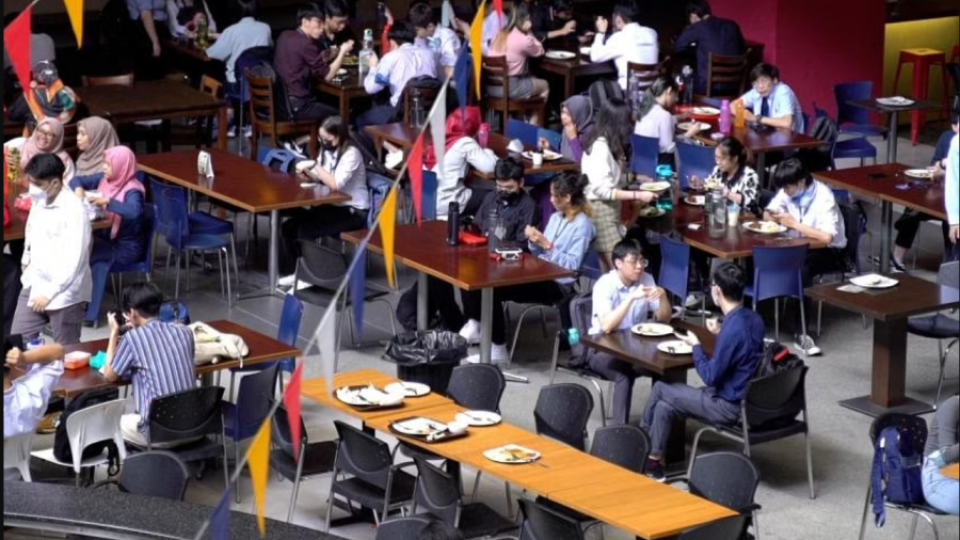June 20, 2023
KUALA LUMPUR – No tuition fees, degree courses shortened to three years and hybrid learning – Malaysian Prime Minister Anwar Ibrahim has been wooing the country’s youth by promising to ease the path to further studies.
Ahead of six key state elections expected in July, Datuk Seri Anwar also reversed a recent decision to stop the Public Service Department (JPA) from offering scholarships for medicine, dentistry and pharmacy courses, and raised allowances from July for existing scholarship holders.
“This will cost the government RM52.03 million (S$15 million) over six months from July, benefiting 43,595 (public service) scholars,” Mr Anwar said in a statement last Tuesday.
He told students at Universiti Kebangsaan Malaysia in Bangi on the same day that he believed tertiary education should be free for all Malaysians except the rich, but that he needed more time to implement such a policy.
Several other changes were announced by the Higher Education Ministry on June 4. These include a move to a hybrid learning system at public universities. Students have to attend lectures for the first and final years and will be given the flexibility of studying from home during the second year.
At least 44 courses at nine public universities will be shortened from four years to three, allowing graduates to enter the workforce earlier, according to Higher Education Minister Khaled Nordin.
The government will also exempt tuition fees for 10,000 needy students in 20 public universities, which would otherwise have cost them RM30 million in total.
For the latest intake, Malaysia’s 20 public universities offered about 71,600 places. A medical degree course at Universiti Malaya costs RM14,200 in total, while a law degree one costs RM8,820.
Education Minister Fadhlina Sidek revealed on June 11 that nearly 4 per cent of 17-year-olds who registered for last year’s Form 5 school-leaving Sijil Pelajaran Malaysia (SPM) – equivalent to Singapore’s O levels – did not turn up for the exams, higher than the 2.7 per cent in 2021. Around 403,000 students sat the SPM 2022 exams.
A study by the UCSI University Poll Research Centre in March found that only 51 per cent out of 1,000 SPM school leavers between 18 and 20 years old who were surveyed planned to continue studying, with 34 per cent looking to become influencers and 26 per cent preferring to join the gig economy.
Poverty was also identified by the Education Ministry as one reason why students dropped out.
Dr Mazlan Ali, senior lecturer at the Razak Faculty of Technology and Informatics at Universiti Teknologi Malaysia (UTM), said that Mr Anwar has been meeting university students in recent days ahead of upcoming state elections in Selangor, Negeri Sembilan, Penang, Kedah, Kelantan and Terengganu.
“By reinstating government scholarships and raising allowances, Anwar is seen by students as caring for their future,” Dr Mazlan said. “We can see a lot of incentives announced by Anwar for students. This could provide a momentum of support for Anwar and the unity government among students, as he heads to the polls.”
Young people aged 18 to 21 are a key demographic after being given the right to vote in 2022. They make up around six million voters of an electoral roll of about 21 million.
A hybrid education system is the way forward as the world has changed after the Covid-19 pandemic, said Dr Mazlan, explaining that it saves money and time otherwise spent on commuting.
“However, students will not experience the full campus life. They may spend less time on laboratory work and in informal learning environments such as societies and clubs,” he said.
If courses are reduced to three years from four, some students may find it hard to cope as they will need to finish their studies faster, he added.
A student at a public university who declined to be named told The Straits Times that the measures would be a boon to those who plan to go to university but cannot afford it, but urged the government to have clear guidelines.
“If it is to reduce the cost, it is a good idea,” she said. “But when you are given the choice to do your middle year from home, how will the government closely monitor the new system? If there is no clear framework from the government, it could lead to even more problems.
“It is better to maximise physical classes. Life experiences are important too, and these are gained through physical interactions that students will miss in their middle years.”
Housewife Mimi Koay, a mother of two students in tertiary education, said she did not think the measures would motivate young people to enrol for a university education.
“Encouraging school leavers to further their studies should be done at the school level, not university level,” she told ST.
“By shortening the course duration, I worry about the quality of graduates and I don’t think our students are mature enough or ready for a hybrid learning system. It will just encourage them to hang out more, instead of doing self-study. Come exam time, this could lead to failure and dropouts.”
As for free education, Mrs Koay hopes this can be done soon.
She said: “Most importantly, it should be inclusive education for all, regardless of race. Students shouldn’t have to compete so hard for only a few places, leading to stress, anxiety and mental breakdown, especially for those who cannot afford it.”


